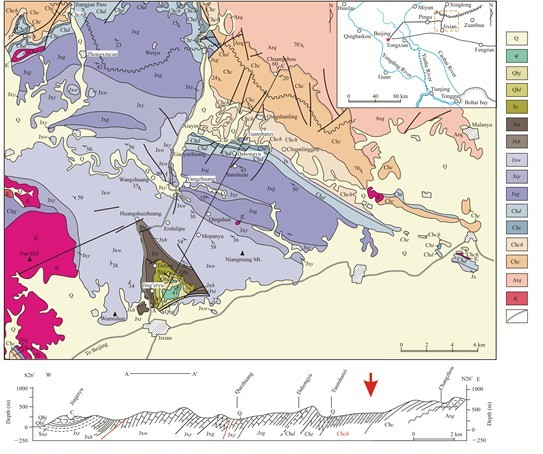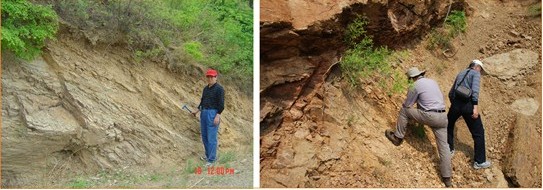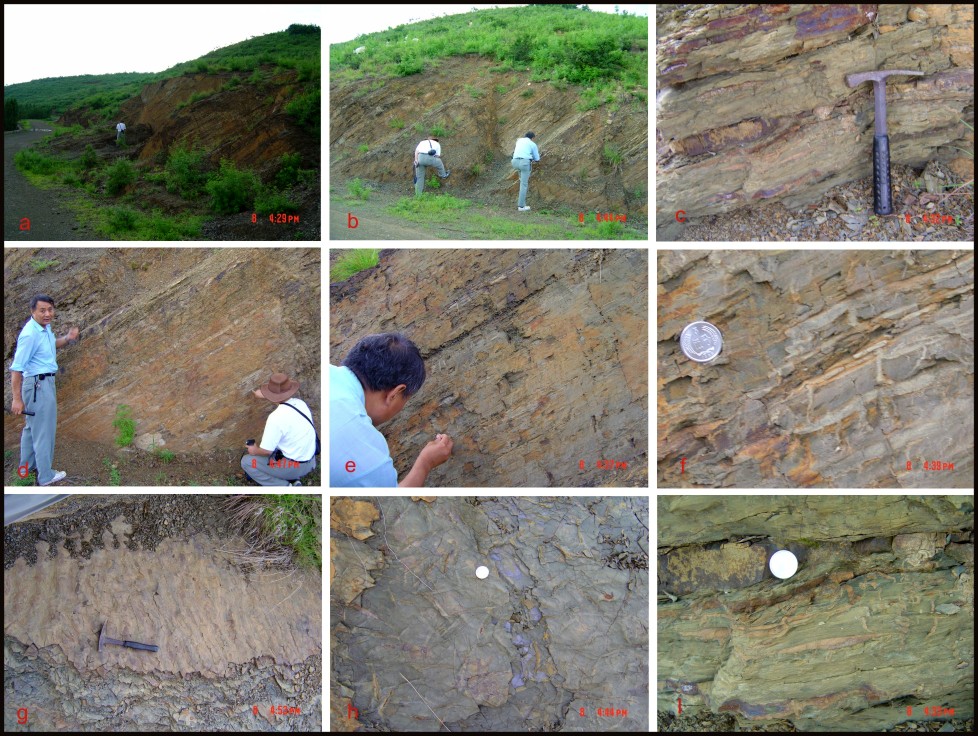Chuanlinggou Fm
Type Locality and Naming
Jixian County, Tianjin. The Chuanlinggou Fm was named by Kao C. S. (Gao Zhenxi), Hsiung Y. H. (Xiong Yongxian) and Kao P. (Gao Ping). The typical section is in Chuanlinggou Village, 16 km northeast of Jixian City, Tianjin Municipality (Hebei, SE of Beijing).
[Figure: The Jixian section in Jixian County, Tianjin Municipality]
Synonym: (串岭沟组)
Lithology and Thickness
The Chuanlinggou Fm mainly consists of silty shale. Based on lithological character, it is subdivided into four members. First member is dark-grey, black silty shale containing bands or lenses of yellow-green siltstone and iron-bearing fine-grained sandstone, with ripple marks and desiccation cracks on the bedding surfaces. Second member is black, dark-grey laminated silty shale. The third member consists of gray-black thick- to medium-bedded microcrystalline and limy dolomite. Fourth member is black laminated silty shale intercalated with grey-white thin-bedded siltstone. It yields stromatolite and contains famous iron ore of Xuanlong type). The formation is stable in lithological character,but changeable greatly in thickness. Its thickness varies from 49 m to 95 m in east segment of Yanshan Mts., its thickness varies from 0 to 119 m); in Lingyuan, Jianping, Chaoyang, Yixian, and Jinxi counties of western Liaoning Province, its thickness varies from 135 to 275 m. The total thickness is recorded to 913 m.
[Figure: Outcrop of the Chuanlinggou Fm] [See Changzhougou Fm for stratigraphic column of the complete Jixian section]
Relationships and Distribution
Lower contact
The base of the Chuanlinggou Fm is in conformable contact with the underlying Changzhougou Fm.
Upper contact
The top is conformably overlain by the Dahongyu Fm.
Regional extent
North Hebei-western Liaoning. The Chuanlinggou Fm is widespread in Yanshan-Liaohe area, and vastly distributed in the west segment of Yanshan Mts.
GeoJSON
Fossils
The formation bears rich microplants, among them the peculiar taxa are Margominuscula antiqua, M. rugosa, Dictyosphaera fasciata, D. macroreticulata, D. rugosa, D. sinica. The cymbiform algae include some elements of Scaphomorphida. There are also macro-algae fossils, such as Chuaria.
Age
Depositional setting
Additional Information
The formation has mixed paleomagnetic polarity and yields a paleomagnetic pole at 22.2°N, 239.1° (Zhang Huimin, 1995).


